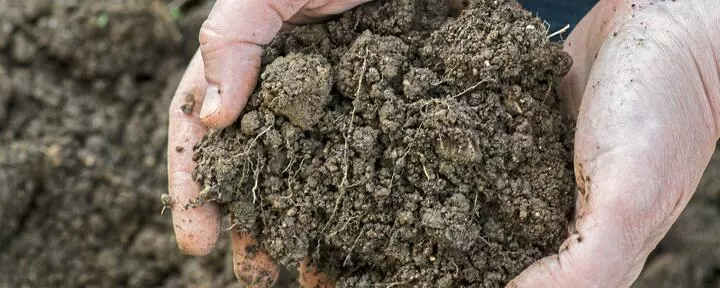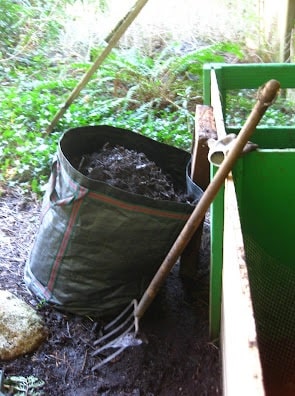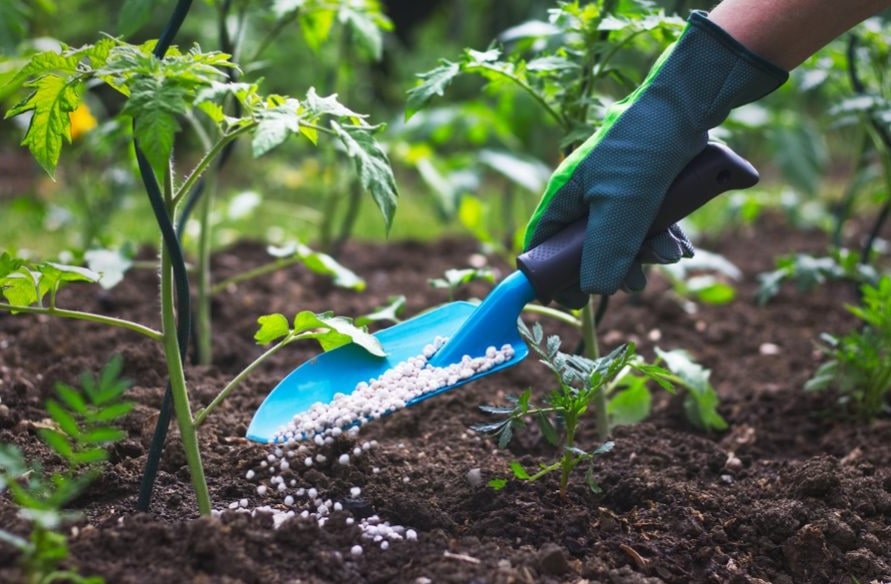It doesn’t have to be direct seeding to get more humus into the soil. Surprisingly many small measures help just as much. Taken together, they have a powerful effect on soil life. We show ways and means that every farm can implement.
- promote permanent vegetation
The key to a functioning soil food web and humus buildup is permanent vegetation. The time without green plants should be kept as short as possible. The goal is to maximize photosynthetic output.
Plants release carbon (C) through their roots in the form of simple sugars, still about 20 percent of the total photosynthetic output.
Microorganisms derive their energy from these sugars. These include mycorrhizal fungi and nitrogen (N)-fixing and phosphorus-solubilizing bacteria. All are important helpers in humus formation.
One example is Markus Mushardt from Otterndorf near Cuxhaven in Lower Saxony. He farms on marshland soils, the classic plowed sites. Through permanent vegetation and wide crop rotations, he is increasingly succeeding in doing without the plow.
2 Cultivating catch crops
Intercrops are easily degradable material for microorganisms. How quickly the intercrop dies and releases the necessary nutrients for soil life and the crop depends on the C:N ratio. The closer it is, the faster the material rots.
For legumes it is 7:1 to 8:1, for crucifers it is slightly higher at 10:1, and for grasses it is particularly wide at around 12:1. Intercrop mixtures with different root types help loosen the soil and promote water absorption.
- using the effects of legumes
Legumes fix atmospheric nitrogen via their root nodules in symbiosis with rhizobia.
In addition, they can break down poorly available phosphorus compounds in the soil and absorb nutrients shifted to the subsoil before they are washed out.
- combine multipliers and tappers
In crop rotation, a balanced ratio of humus eaters, such as root crops, and humus multipliers (including clover) should be created for the benefit of the site-typical humus content.
New crop production systems and year-round plant cover succeed in keeping mycorrhizal fungi in the soil across crop rotations, for example.
Alternative cropping systems include: Undersowing, evergreen system, companion crops (such as canola and legumes), multiple or dual cropping, relay cropping, or even agroforestry systems.
- gentle soil cultivation
Non-turning tillage and no-till can increase humus levels in the topsoil. Mulch remains on the soil surface, soil life is spared, and good soil structure can develop over the long term.
Stable soil crumbs allow rapid water absorption and protect against erosion. Intensive tillage mineralizes soil nutrients and destroys the soil structure and the network of mycorrhizal fungi.
Optimal pore distribution ensures oxygen supply to roots and soil life and promotes root penetration and water absorption. In compacted soils, humus build-up is not possible.
- support roots
Roots contribute 2.3 times more to soil organic carbon content than the same amount of aboveground biomass. A higher carbon input via roots, for example with catch crops, is more efficient than an input via the soil, for example with straw.
Root exudates from crops account for about 30 percent of belowground carbon. At the same time, deep rooting is a guarantee for making plants more resistant to drought.
- leave crop residues in the field.
In addition to below-ground biomass, organic residues such as straw and plant residues play an important role. They protect as mulch cover and form a nutrient and structure building pool.
Soil organisms, especially earthworms, need mulch material on the soil surface as food. By forming stable clay-humus complexes, they contribute to humus production.
- examine soil specifically
The humus balance is used to estimate the humus effect of the cultivated fruits and organic fertilizers. However, this calculation says little about the actual humus content. For this reason, the Bavarian State Institute for Agriculture, for example, recommends determining it every five to six years by taking samples in the spring before the start of vegetation.
Rapid analytical tools such as near-infrared (NIR) spectroscopy open up new possibilities for quantifying soil carbon and its dynamics.
First handheld instruments are on the market to determine humus in real-time measurement, for example XLab. They facilitate laborious soil sampling. The smartphone software CarboCheck can forecast the development of soil carbon over time.
- fertilize organically
Farm fertilizers provide the soil with organic matter and basic active substances and the plants with necessary nutrients. High levels of organically bound nitrogen promote microbial biomass in the soil.
Mycorrhizae and microbes could supply the plant with nitrogen and phosphorus almost completely.
An average compost application of 30 t/ha DM provides the field with about 1.2 t/ha of basic active components and thus acts like liming. Additional pore volume with more stability is created.
- adjust the pH value correctly
Soil microorganisms require a neutral pH. Acidic soils reduce bacterial soil life and thus soil fertility.
Thus, a needs-based lime supply supports humus buildup.
- testing soil additives
With increasing focus on soil biology, more and more biofertilizers are entering the market. Microorganism preparations contain mycorrhizal fungi, phosphorus-mobilizing bacteria or free-living nitrogen fixers. They are designed to stimulate plant growth and improve soil fertility.
International studies show yield increases of up to 16 percent. However, 85 percent of these studies come from the tropics and subtropics. These soils are not comparable to ours in terms of humus and phosphorus content.
In relation to typical supply levels in our arable soils, the yield increases are mostly in the range of random fluctuation, which cannot be guaranteed, and are therefore hardly verifiable.









